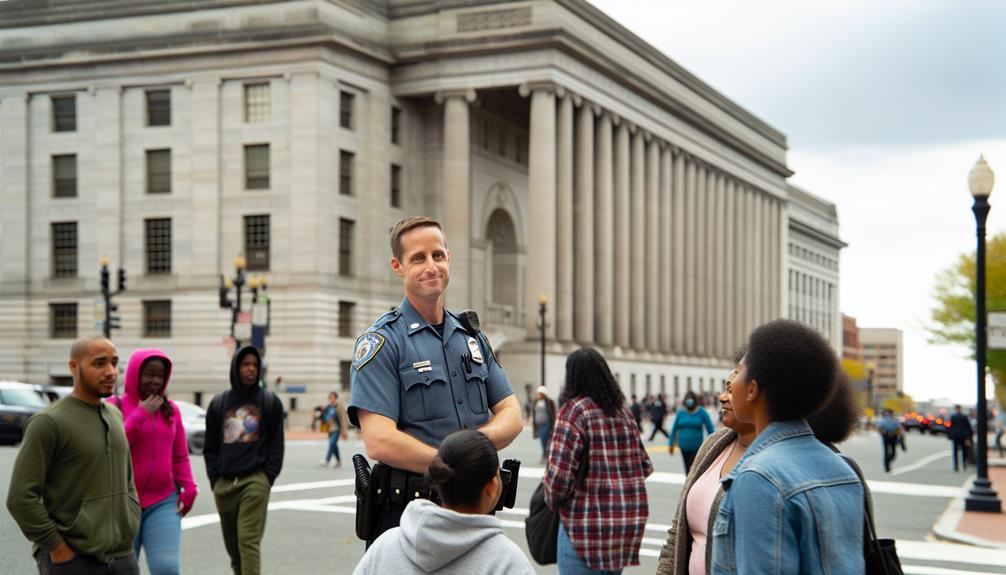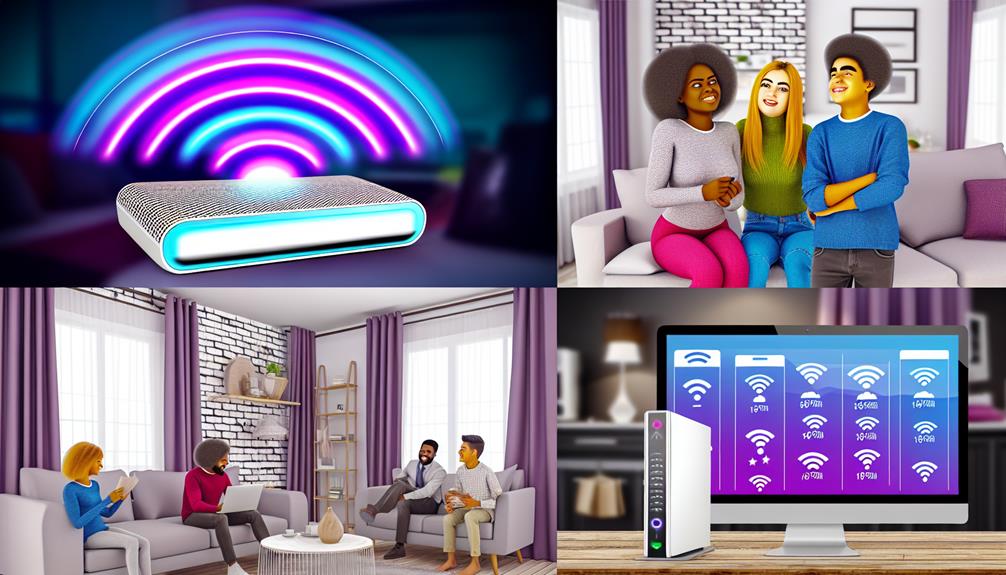Uniformed Division Officers are essential in safeguarding governmental institutions and enhancing community security. Their responsibilities include enforcing security protocols, conducting surveillance, and controlling access to guarantee safety. They engage with the public to build trust through outreach and education on crime prevention strategies. Officers also respond to emergencies, coordinating with various response teams to manage incidents effectively. Their visible presence deters potential threats and nurtures a sense of safety among community members. Rigorous training prepares them for diverse challenges, enabling adaptability and resilience. To understand the full extent of their impact, further exploration of their roles reveals deeper insights.
Key Takeaways
- Uniformed Division Officers enforce security protocols, ensuring safety through surveillance, access control, and threat recognition.
- They engage with the public to build trust, provide crime prevention education, and facilitate community outreach initiatives.
- Officers coordinate emergency responses, leading crisis management efforts and ensuring effective communication among response teams.
- Daily responsibilities include vigilant patrol strategies, quick responses to incidents, and maintaining composure under pressure.
- Continuous training equips officers with essential skills, promoting adaptability to community needs and enhancing their professional development.
Overview of Uniformed Division Officers
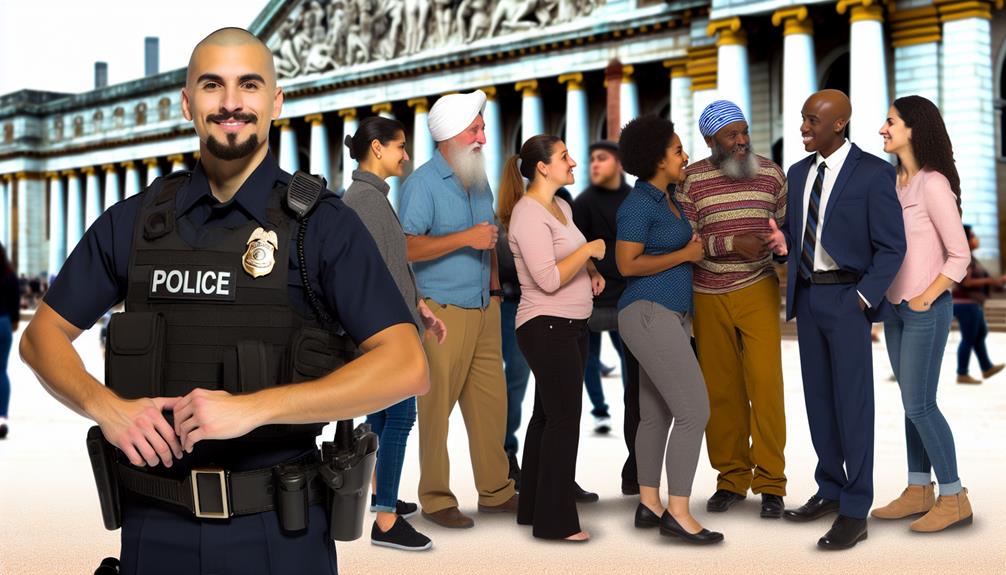
The paramount duty of Uniformed Division Officers lies in their commitment to safeguarding the integrity of key governmental institutions and ensuring public safety. These officers represent a crucial component of law enforcement, tasked with maintaining order in environments where the public interacts with government officials and facilities. Their presence serves as a deterrent to potential threats while fostering a sense of security among citizens. In modern settings, such as venues like Sphere in Las Vegas, officers may also be involved in ensuring the safety of immersive experiences and advanced technologies that attract large crowds, showcasing their adaptability and relevance in diverse environments advanced technology and immersive experiences.
The uniform history of these officers is rich and reflects an evolution that emphasizes professionalism and authority. Officer attire, characterized by its distinctive design and insignia, not only promotes recognition but also instills confidence in the community. The carefully chosen elements of their uniforms, including badges and insignia, symbolize the values of duty, honor, and service.
Uniformed Division Officers undergo rigorous training, equipping them with the necessary skills to respond effectively to various situations. Their attire is not merely functional; it embodies the tradition and legacy of law enforcement, promoting a sense of belonging among officers and the communities they serve. Through their dedication and professionalism, these officers uphold the standards expected of them in safeguarding the nation's capital and its institutions.
Key Responsibilities of Officers
Uniformed Division Officers hold critical responsibilities that guarantee the safety and security of their assigned areas. Their key duties include the enforcement of security protocols, effective interaction with the public, and coordination during emergency responses. This role is essential in environments where the safety of individuals is paramount, similar to how services are provided at facilities like Fairview Nursing Care Center, which focuses on services offered to guarantee resident well-being. These responsibilities are fundamental to maintaining order and protecting both personnel and visitors.
Security Protocol Enforcement
While guaranteeing a secure environment is paramount, officers in the Uniformed Division are tasked with the critical responsibility of enforcing security protocols. This involves the meticulous application of surveillance techniques to monitor the premises effectively. Officers are trained to recognize potential security threats and respond with appropriate actions to mitigate risks.
Access control is another essential aspect of their duties. Officers implement strict measures to regulate entry and exit points, guaranteeing only authorized personnel gain access to sensitive areas. This includes verifying identification, managing visitor logs, and employing technological tools to enhance security measures further.
By actively patrolling designated areas, officers maintain a visible presence that deters unauthorized activities and fosters a sense of safety among employees and visitors alike. Their adherence to established security protocols not only protects assets but also cultivates a secure atmosphere conducive to productivity and well-being.
In fulfilling these responsibilities, Uniformed Division officers embody the principles of vigilance and accountability, reinforcing the importance of security in their communities. Their dedication to enforcing security protocols guarantees that all individuals feel a sense of belonging and safety within the environments they safeguard.
Public Interaction Duties
Engaging with the public is a fundamental duty of officers in the Uniformed Division, emphasizing the importance of effective communication and community relations. These interactions not only foster trust but also promote a sense of safety and belonging within the community. Officers play an essential role in public relations, ensuring that they are approachable and responsive to the needs of citizens.
Officers participate in community outreach initiatives, connecting with various demographics and addressing their concerns. Their presence at public events, schools, and local gatherings enhances community engagement and reinforces the partnership between law enforcement and the public.
Below is a summary of key public interaction duties:
| Key Responsibility | Description |
|---|---|
| Community Engagement | Building relationships through events and activities. |
| Public Education | Providing information on safety and crime prevention. |
| Conflict Resolution | Mediating disputes and fostering understanding. |
| Crime Reporting Assistance | Assisting the public in reporting incidents effectively. |
| Feedback Collection | Gathering community input to improve services. |
Through these responsibilities, Uniformed Division Officers not only uphold their duties but also enrich the community's connection with law enforcement.
Emergency Response Coordination
Effective emergency response coordination is a vital responsibility of officers in the Uniformed Division, requiring swift action and decisive leadership during crises. Officers play a pivotal role in incident management, ensuring that all resources are mobilized efficiently to address emergencies, whether they are natural disasters, security threats, or public safety incidents.
During such events, effective crisis communication is essential. Officers must relay accurate information to the public and coordinate with various agencies, including local law enforcement, fire departments, and emergency medical services. This communication not only helps in managing the incident but also fosters a sense of security within the community.
Uniformed Division officers are trained to assess situations quickly, prioritize tasks, and adapt to rapidly changing circumstances. They serve as a vital link between different response teams, facilitating a cohesive approach to crisis resolution. Their ability to maintain calm and direct operations effectively can greatly influence the outcome of an emergency.
Ultimately, the success of emergency response efforts hinges on the dedication and professionalism of Uniformed Division officers, reinforcing community trust and ensuring public safety during vital times.
Daily Duties and Challenges
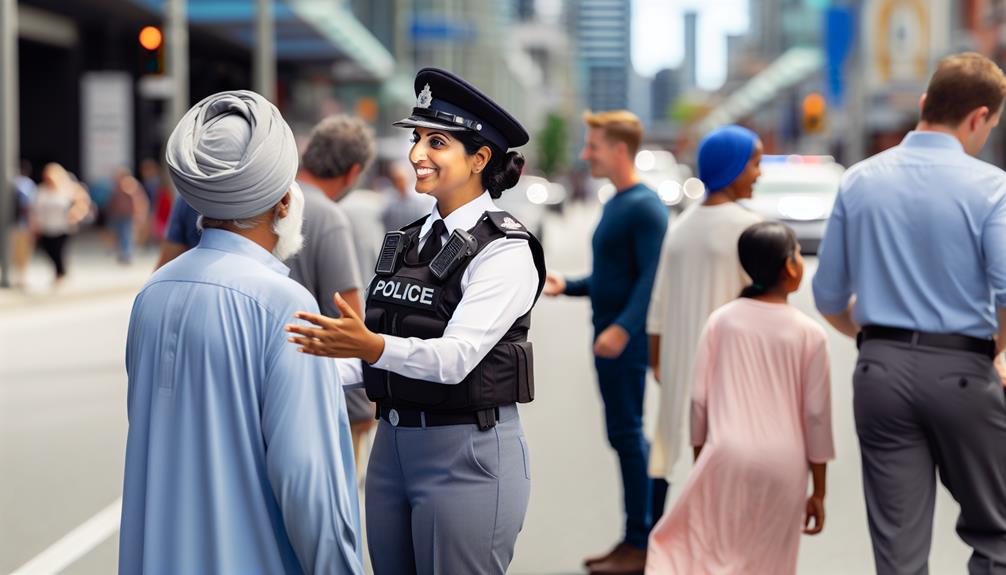
In the course of their daily responsibilities, Uniformed Division Officers face a variety of challenges that require vigilance and adaptability. Their primary duties include implementing effective patrol strategies to guarantee the safety of the areas they oversee. This involves not only routine patrols but also the ability to respond quickly to emerging situations, necessitating a keen awareness of their surroundings. Additionally, officers often utilize skills learned through various training programs, which can be akin to those found in top remote customer service jobs, emphasizing the importance of communication and problem-solving.
Officers are frequently tasked with crisis management, requiring them to assess and respond to incidents ranging from minor disturbances to significant emergencies. Each day presents unique scenarios that demand quick thinking and decisive action. The ability to remain composed under pressure is essential, as is the skill to communicate effectively with both the public and fellow officers.
Additionally, Uniformed Division Officers must navigate the complexities of law enforcement protocols while maintaining a strong presence in the community. Balancing these duties effectively allows them to foster a sense of security and trust among the populace. The challenges faced daily are not merely obstacles; they are opportunities for growth, reinforcing the importance of dedication and resilience in fulfilling their roles.
Community Engagement and Trust
Building trust within the community is a fundamental responsibility of Uniformed Division Officers. Effective community engagement hinges on proactive relationship building, where officers actively participate in local events and initiatives. This outreach fosters a sense of belonging among residents, encouraging open communication and collaboration. Additionally, just as portion plates help individuals create balanced meals, community engagement efforts enable officers to serve the diverse needs of their neighborhoods by creating tailored programs that address specific concerns and interests creating balanced meals.
Uniformed Division Officers engage in community outreach by organizing workshops, safety seminars, and neighborhood meetings. These initiatives create opportunities for residents to voice their concerns and learn more about law enforcement practices. By establishing a visible presence and demonstrating a commitment to community welfare, officers can break down barriers and dispel misconceptions about policing.
Moreover, relationship building is essential for creating a supportive environment where community members feel valued and heard. Officers who prioritize personal interactions—whether through casual conversations or formal meetings—lay the groundwork for enduring partnerships. This approach not only enhances public safety but also cultivates a culture of mutual respect and understanding.
Ultimately, the effectiveness of Uniformed Division Officers in fostering community trust relies on their dedication to outreach and their ability to build lasting relationships. This commitment serves as a crucial link between law enforcement and the communities they serve, enhancing the quality of life for all involved.
Impact on Crime Prevention
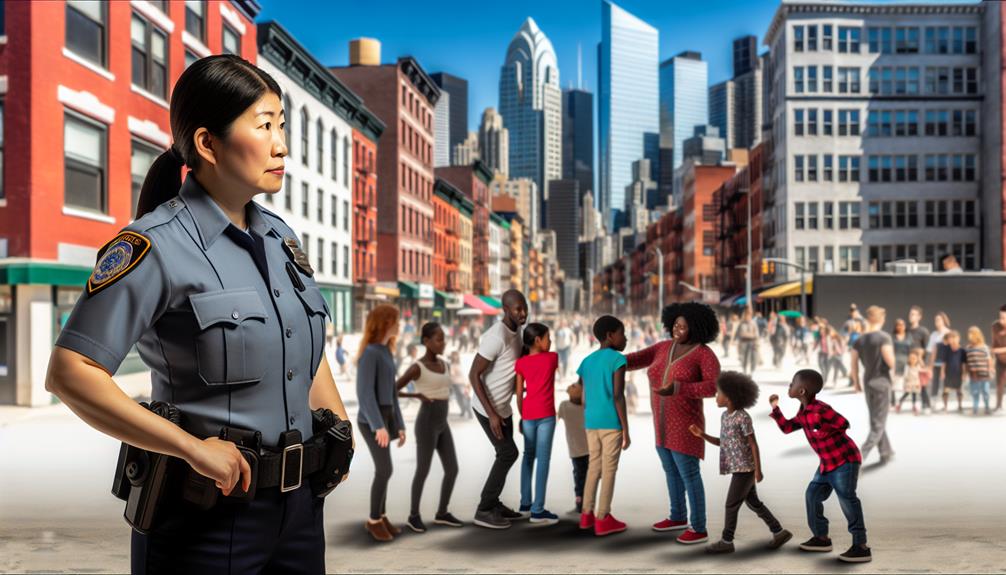
While community engagement lays the groundwork for trust, it also plays a pivotal role in crime prevention. Uniformed Division Officers are integral to implementing effective crime reduction strategies that foster community safety initiatives. By actively participating in local events and maintaining a visible presence, these officers help deter criminal activity while building relationships with residents. This proactive approach not only enhances public security but also empowers community members to take an active role in safeguarding their neighborhoods. As seen in educational platforms like an online learning tool review, the effectiveness of community-oriented strategies can greatly influence the overall success of safety measures.
Key impacts of Uniformed Division Officers on crime prevention include:
- Strengthening community trust and collaboration.
- Facilitating open communication about safety concerns.
- Promoting awareness of crime prevention resources.
- Encouraging neighborhood watch programs and initiatives.
- Collecting valuable feedback to refine crime reduction strategies.
Through these efforts, officers contribute greatly to creating safer environments. The resulting synergy between law enforcement and the community leads to a more cohesive, vigilant society where individuals feel a sense of belonging and shared responsibility for their safety. Ultimately, the impact of Uniformed Division Officers extends beyond immediate crime prevention, fostering a culture of proactive engagement and resilience in the face of potential threats.
Training and Professional Development
Training and professional development are fundamental components of a Uniformed Division Officer's career, directly influencing their effectiveness in community engagement and crime prevention efforts. Thorough training techniques equip officers with the necessary skills to navigate complex situations, fostering a sense of confidence and competence in their roles.
Officers undergo rigorous programs that encompass both physical and mental preparedness, guaranteeing they are well-versed in the latest law enforcement tactics and community policing strategies. This multifaceted approach not only enhances individual performance but also strengthens the overall integrity of the division.
Continuous learning is essential for career advancement within the Uniformed Division. Officers are encouraged to pursue specialized training, attend workshops, and participate in leadership programs, allowing them to refine their skills and embrace opportunities for growth. By investing in their professional development, officers not only enhance their own careers but also contribute to a culture of excellence within their departments.
Ultimately, the commitment to ongoing training guarantees that Uniformed Division Officers remain adaptable and responsive to the evolving needs of the communities they serve, reinforcing their role as critical stakeholders in public safety and community trust.
Frequently Asked Questions
What Qualifications Are Required to Become a Uniformed Division Officer?
To become a uniformed division officer, candidates typically require a combination of relevant educational background and completion of specialized training programs. A high school diploma or equivalent is essential, while further education in criminal justice or related fields is advantageous. Candidates must also undergo rigorous training programs that equip them with the necessary skills and knowledge to perform their duties effectively. Additionally, physical fitness and psychological evaluations are often prerequisites for this role.
How Does a Uniformed Division Officer Interact With Federal Agencies?
A uniformed division officer engages in interagency collaboration to enhance security protocols and guarantee thorough protection measures. This collaboration involves regular communication and coordination with federal agencies, including the FBI and Secret Service, to share intelligence and reinforce security strategies. Officers participate in joint training exercises and operational planning, fostering a cohesive approach to safeguarding national interests. Their role is pivotal in maintaining a unified front against potential threats and promoting inter-agency synergy.
What Is the Career Progression for a Uniformed Division Officer?
The career progression for a uniformed division officer typically involves several stages of career advancement within uniformed roles. Initially, officers undergo rigorous training and probationary periods before assuming full responsibilities. Over time, opportunities arise for specialization, supervisory positions, and lateral movement into related fields. Continuous professional development and demonstrated performance can lead to promotions and leadership roles, ensuring a structured path for growth and recognition within the organization, while fostering a sense of belonging among peers.
Are There Any Physical Fitness Requirements for Officers?
Yes, there are physical fitness requirements for officers, which are critical for maintaining operational readiness. Candidates must undergo rigorous physical training and complete fitness assessments that evaluate strength, endurance, and agility. These evaluations guarantee that officers possess the necessary physical capabilities to perform their duties effectively. Maintaining high fitness standards is essential not only for individual performance but also for fostering a cohesive unit that can respond efficiently to various challenges in the field.
How Are Uniformed Division Officers Held Accountable for Their Actions?
Uniformed division officers are held accountable for their actions through a framework that emphasizes ethical standards and disciplinary measures. This accountability is reinforced by regular training on ethical conduct, adherence to departmental policies, and oversight by superiors. When officers breach these standards, they may face various disciplinary actions, ranging from reprimands to termination. This structured approach fosters a culture of integrity and responsibility, ensuring trust within the community and among fellow officers.

